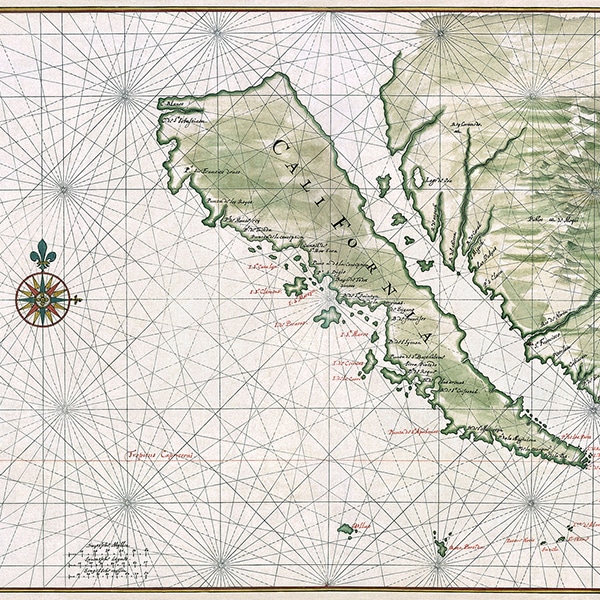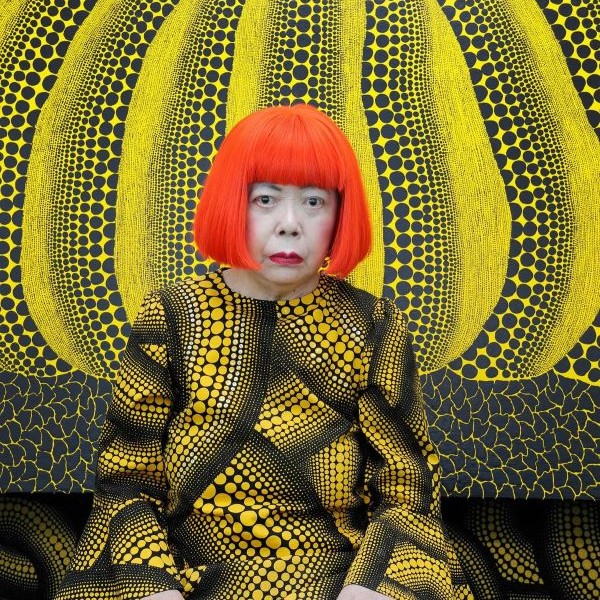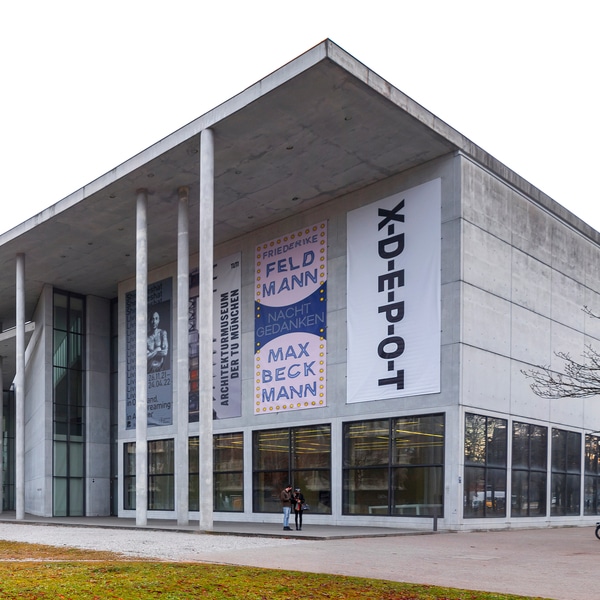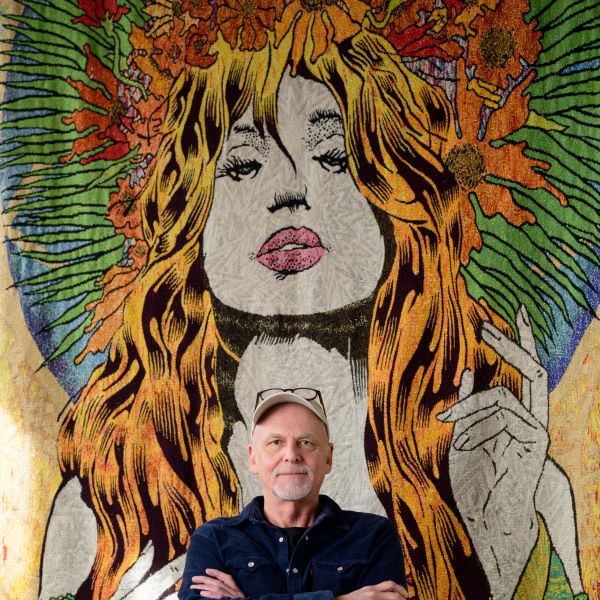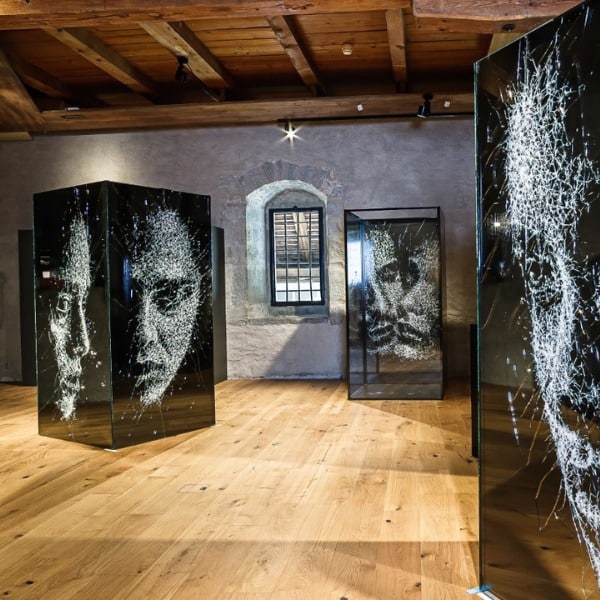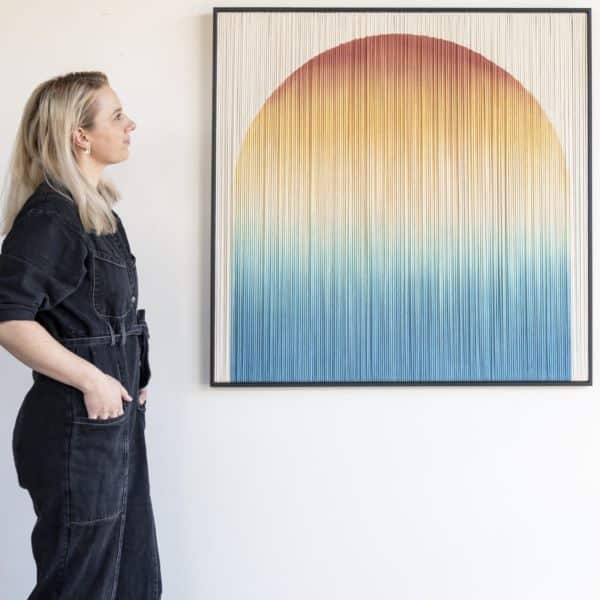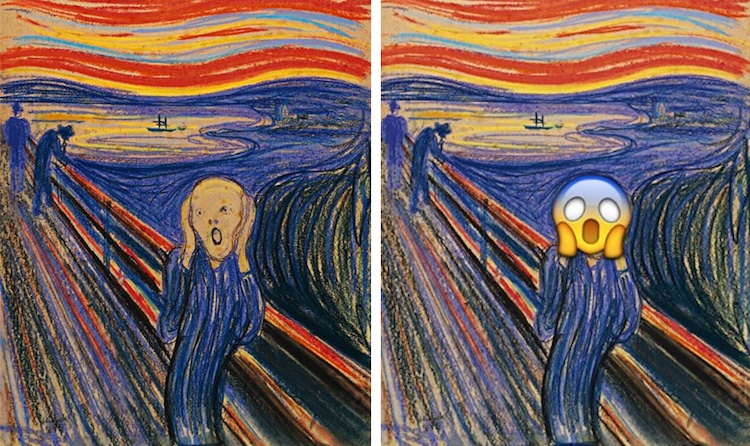
Recently, many artists have embraced a fascinating trend: putting a contemporary spin on well-known works of art. From classical paintings to modernist masterpieces, many iconic artworks have been inventively updated by avant-garde creatives who look to art history as a source of both inspiration and infinite possibilities.
One well-known work of art that has repeatedly served as a subject for these reinterpretations is The Scream, a series of works by Edvard Munch. Here, we look at a selection of Scream-inspired artwork, paying particular attention to pieces either created with unconventional materials or treated with a pop culture twist. Before one can appreciate these modern renditions, however, it is important to become familiarized with the original art itself.
The Scream Series History
Edvard Munch, a prominent Norwegian painter and printmaker, is predominantly known for his dark and dreary Expressionist art. In 1893, he first experimented with his now-iconic Scream subject matter, which, over the course of 17 years, would culminate in a series of 4 pieces.
Composed of crayon on a cardboard canvas, the oldest version of this composition, features the same subject matter that would appear in subsequent renditions: in the foreground, a mysterious figure holds his hands to his face and screams. Along with 2 other unknown figures, he is shown standing on a bridge that crosses a blue body of water and recedes into a vivid sunset.
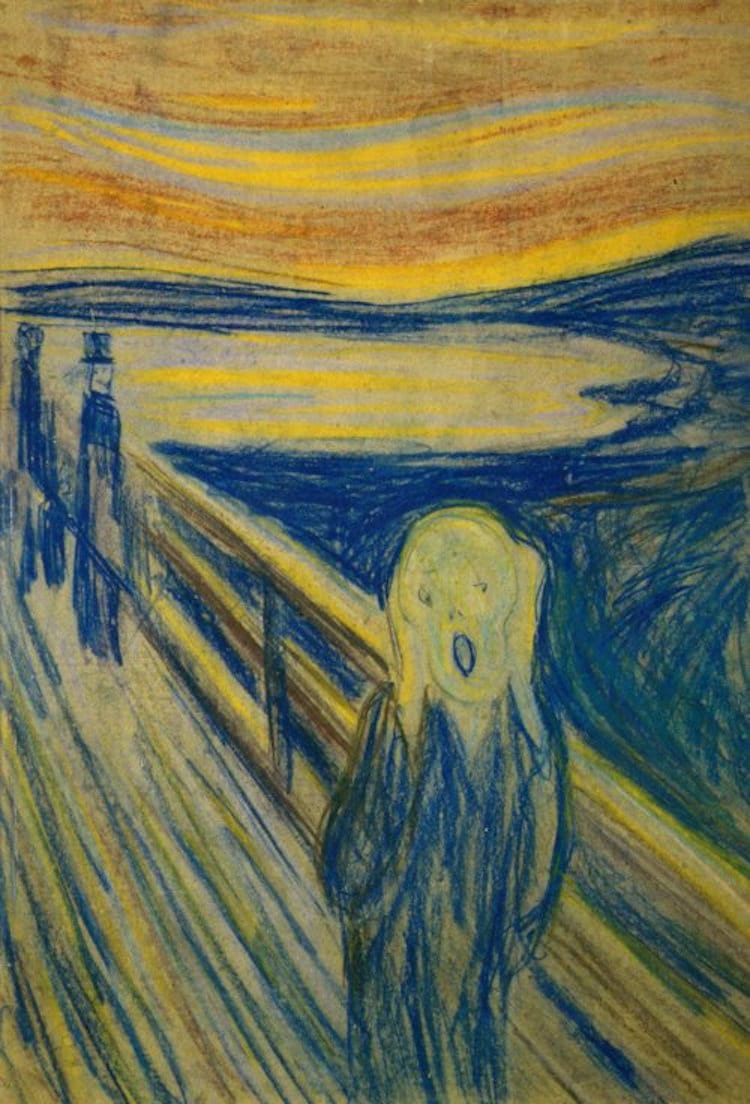
Crayon on cardboard (1893)
Later that same year, Munch would go on to create the most well-known depiction of The Scream: a piece rendered in tempera paint. Unlike the crayon study which was primarily painted blue and gold, this work features a brighter and richer palette.
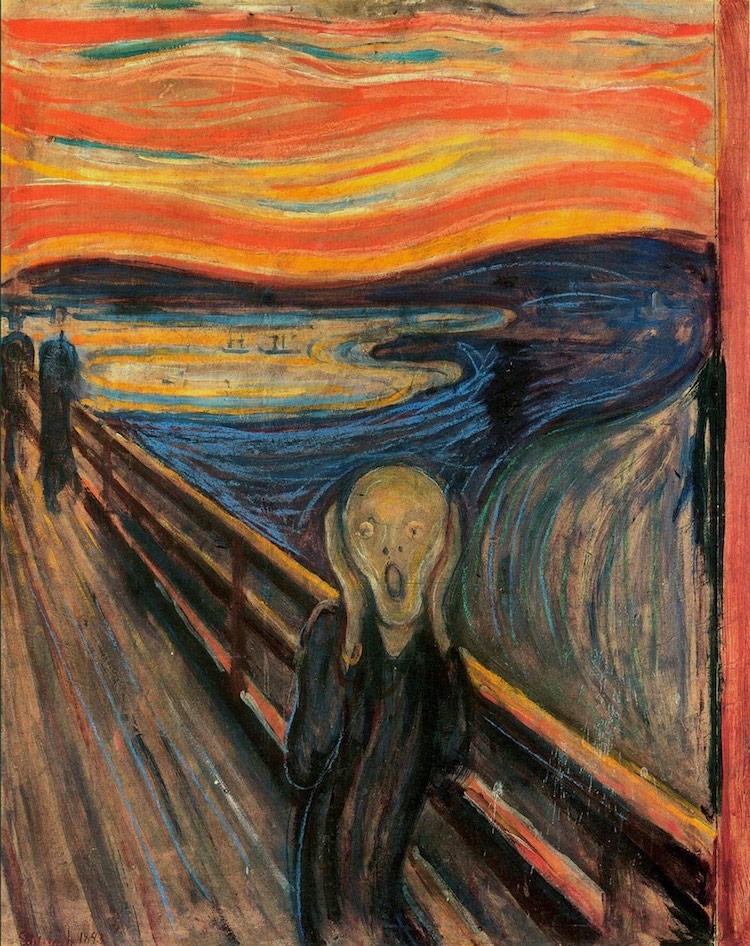
Tempera on cardboard (1893)
Two years later, Munch produced another version of The Scream. In this piece, a similar color palette is employed, but in oil pastel instead of paint. Given this medium, the completed work appears much more unpolished and sketch-inspired than his previous painting.
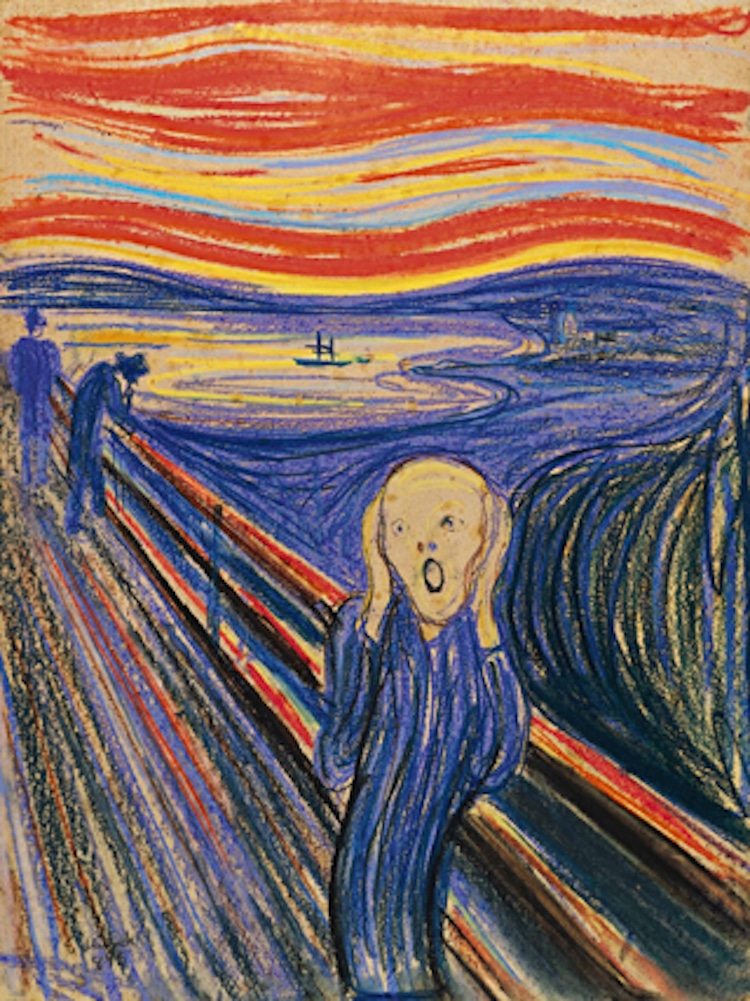
Pastel on cardboard (1895)
Munch's final Scream is perhaps the most distinctive. Created in 1910, this painting's figure has a different face than those that precede it. With hollowed eyes and cheekbones, his expression is slightly more sinister. Additionally, in this piece, Munch left much of the canvas exposed. Though it's rendered in paint, it appears to have more in common with the pastel and crayon versions than its painterly predecessor.
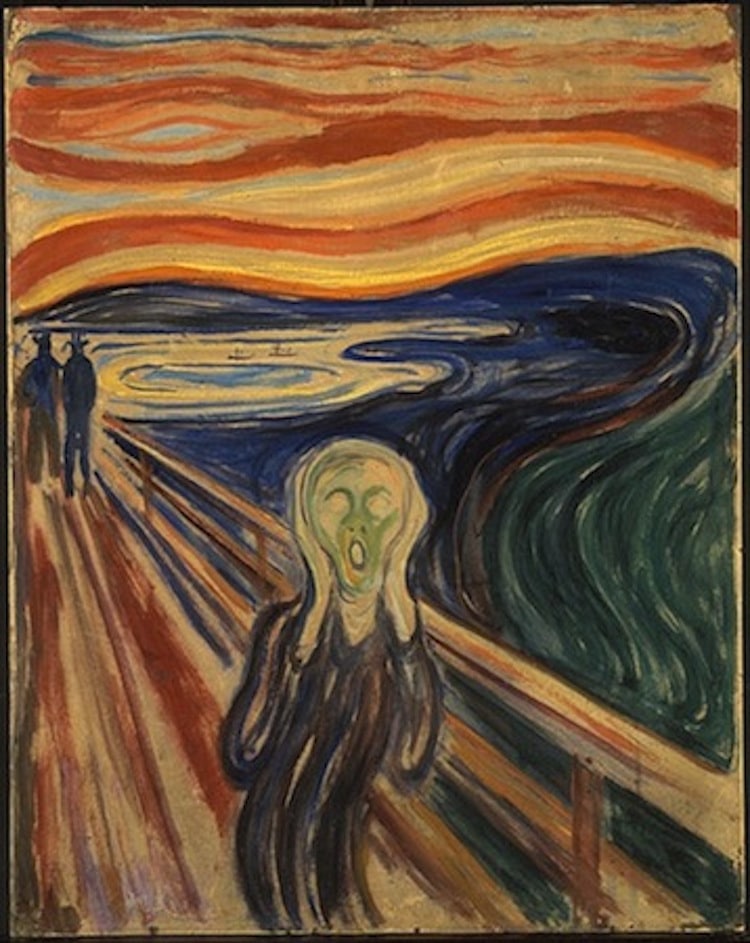
Tempera on board (1910)
Modern Interpretations
Given its fascinating subject matter and prominent place in art history, many modern and contemporary artists have opted to recreate their own visions of the iconic composition. These recreations span a myriad of mediums and materials, including:
Screenprinting
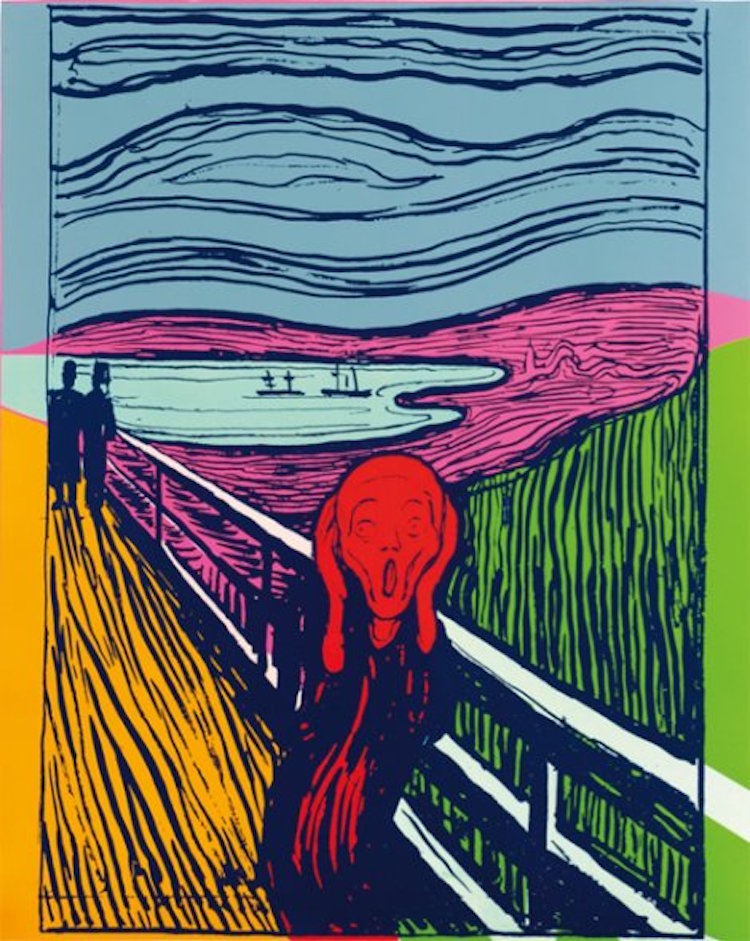
Photo: MoMA
Digital Painting
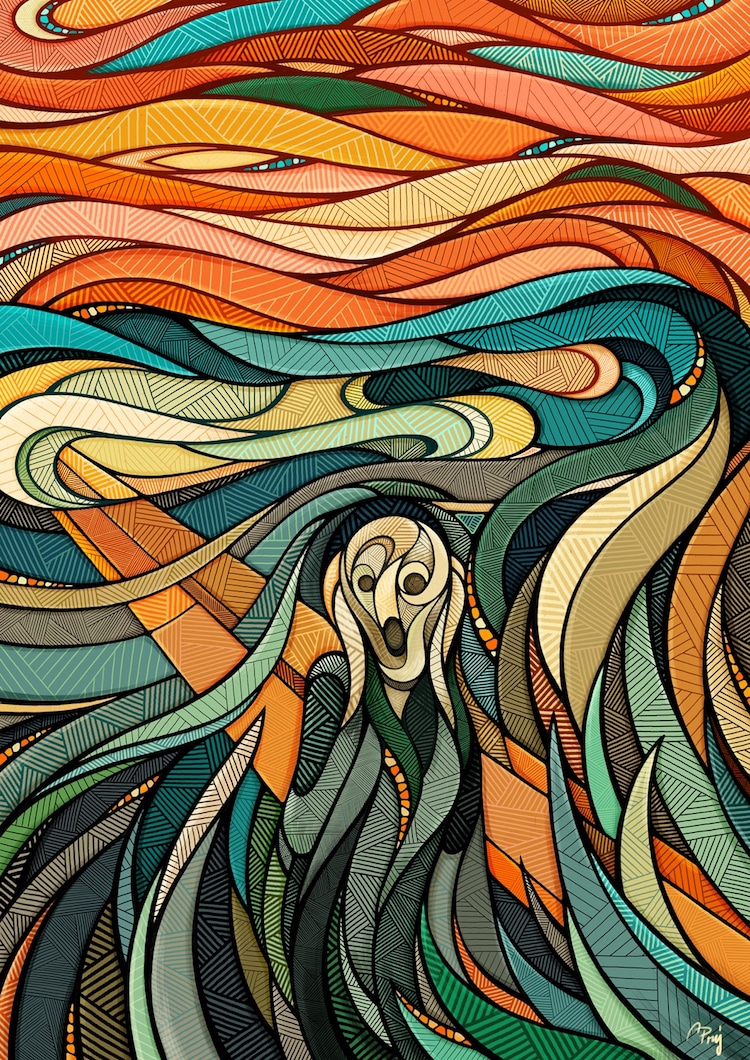
Photo: Andreas Preis
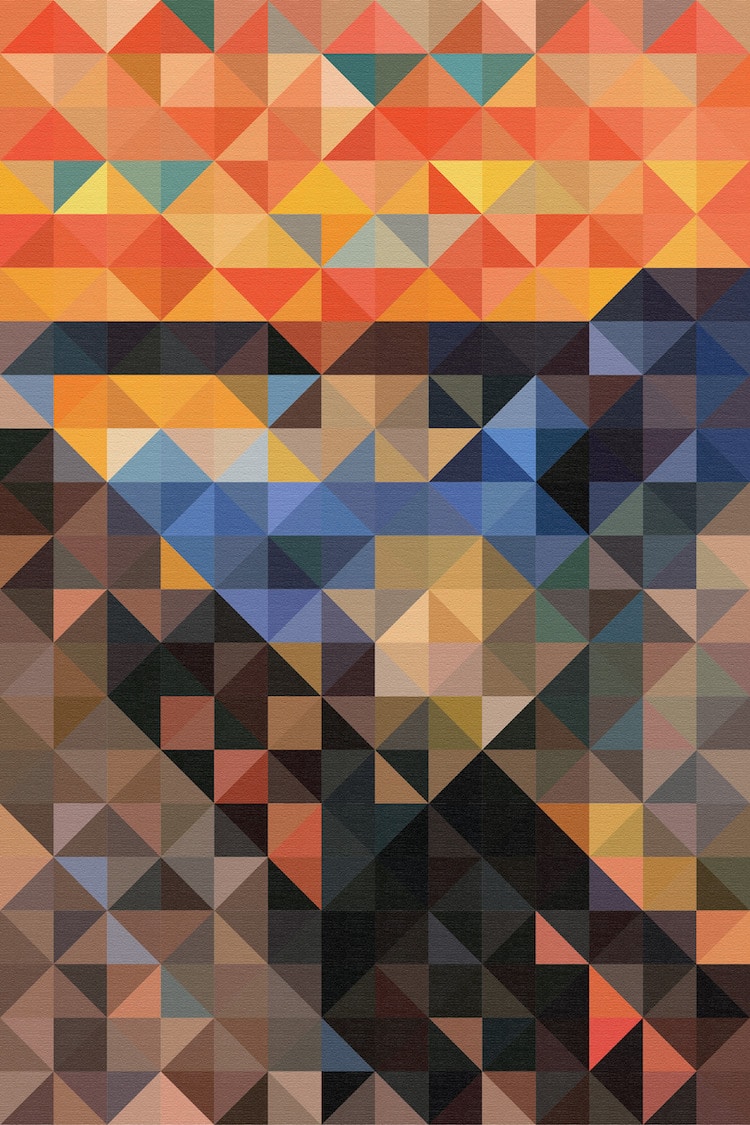
Photo: Chris Marsden
Light Painting
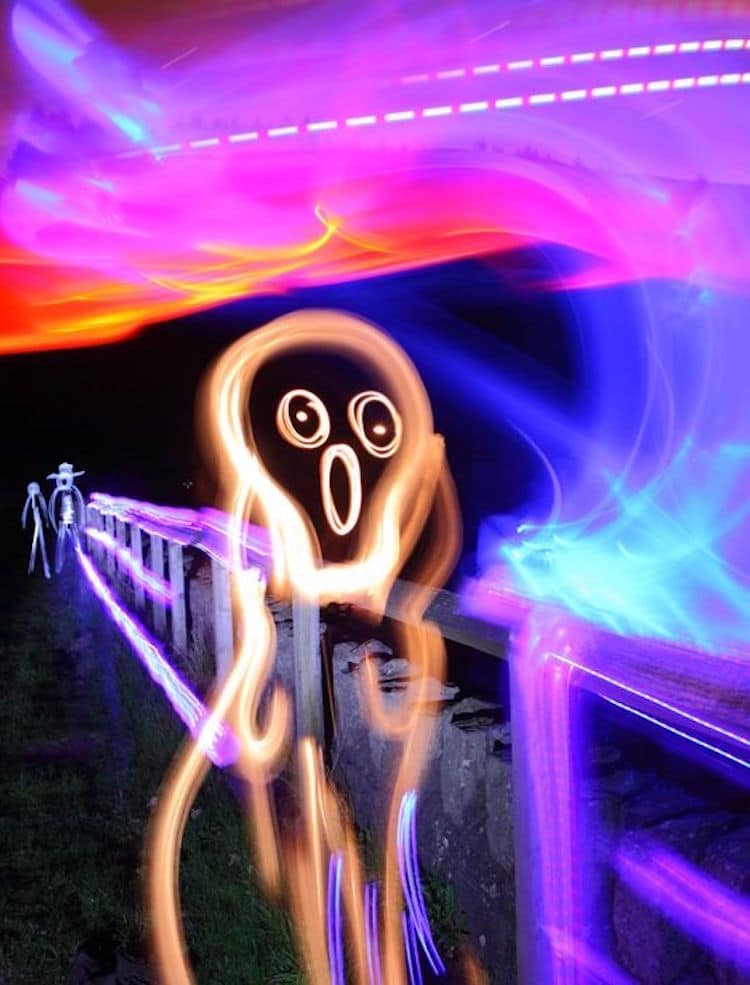
Photo: Michael Bosanko
Cardboard
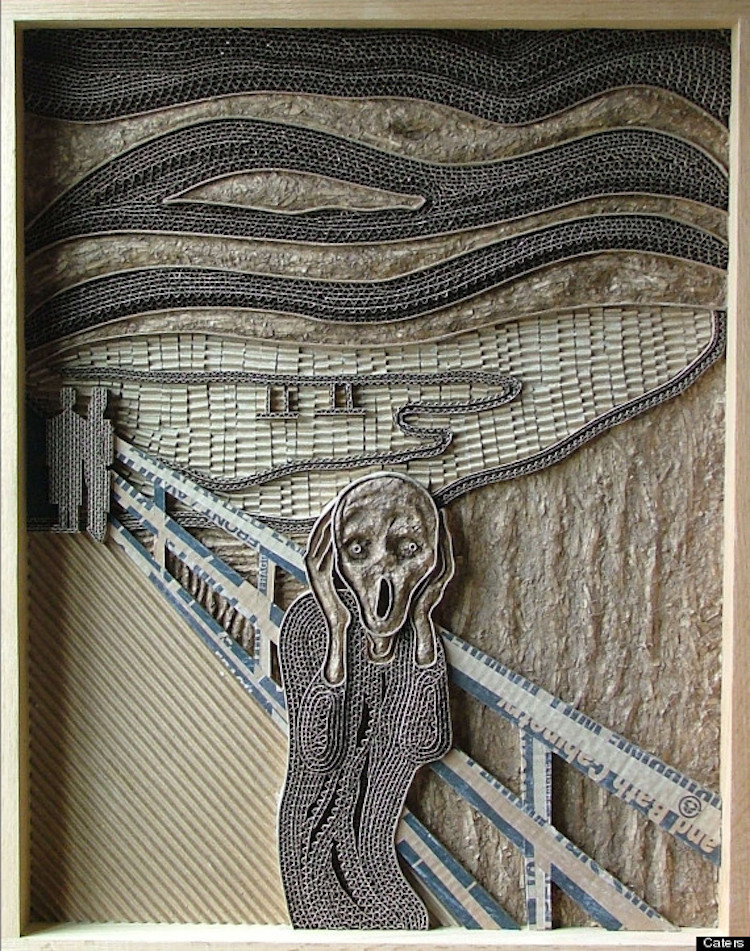
Photo: Mark Langan
LEGO
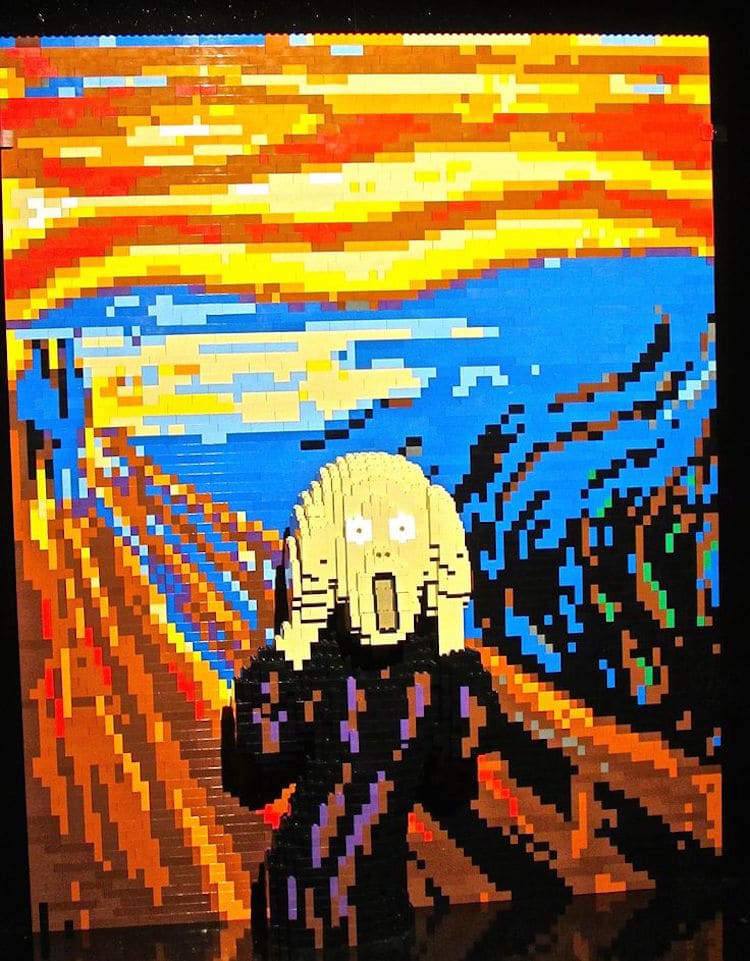
Photo: The Worley Gig
Pencils
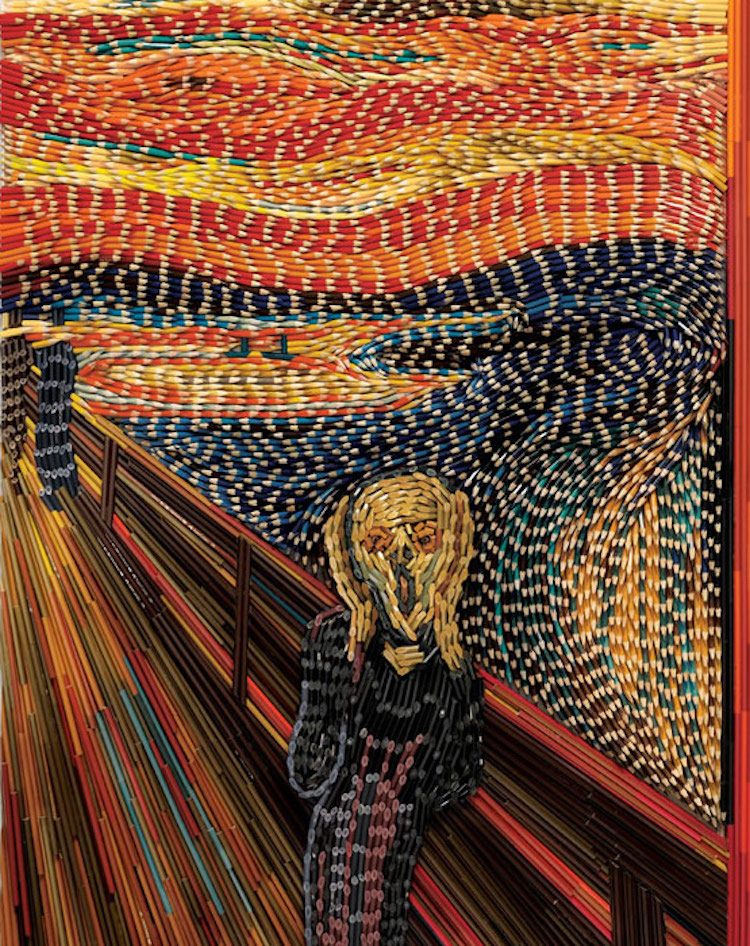
Photo: David Stevanov
Food
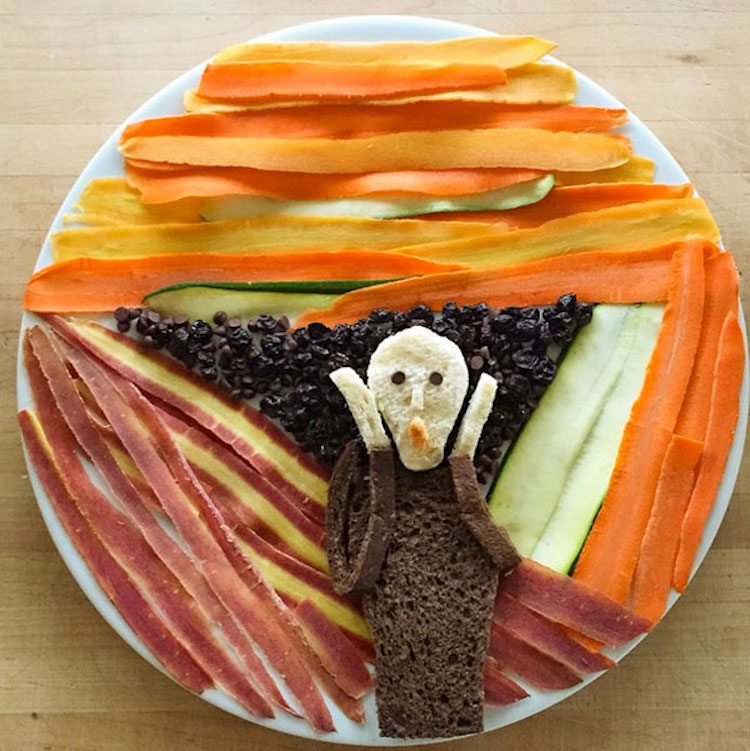
Photo: mariesaba
Pumpkins
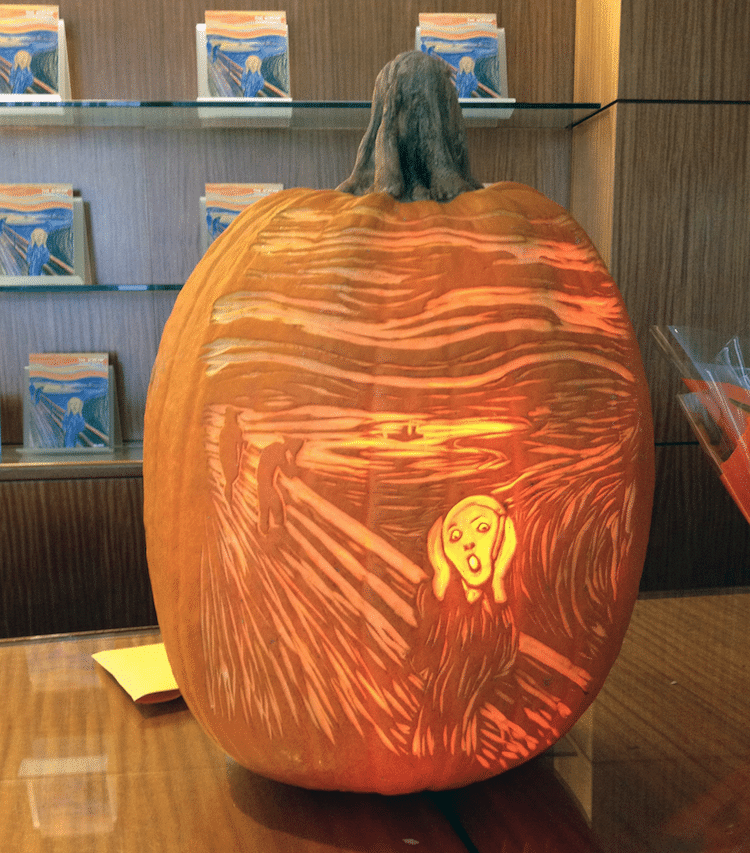
Photo: Maximiliano Duron at MoMA
Tattoos
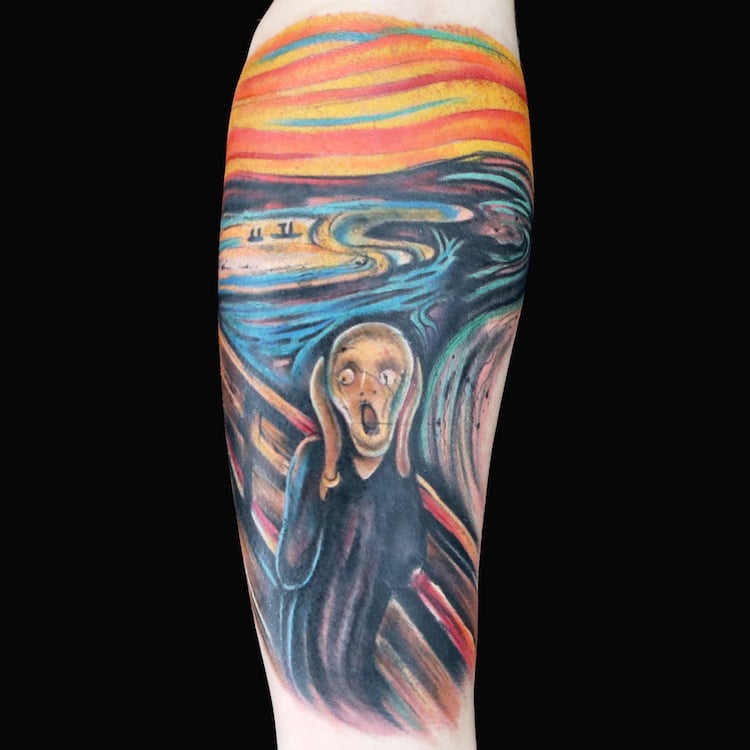
Photo: Ink Master
Hair

Photo: Ursula Ugoff
…And even claymation!
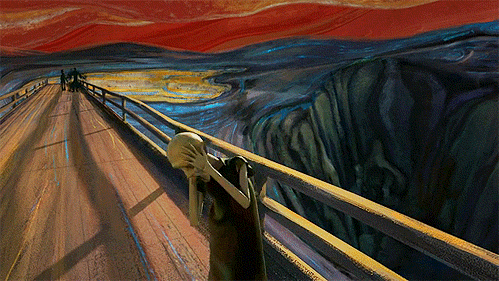
Additionally, some artists have creatively combined the paintings' recognizable subject with other works of art, like Van Gogh's Starry Night, Hokusai's The Great Wave, and Salvador Dalí's The Persistence of Memory.
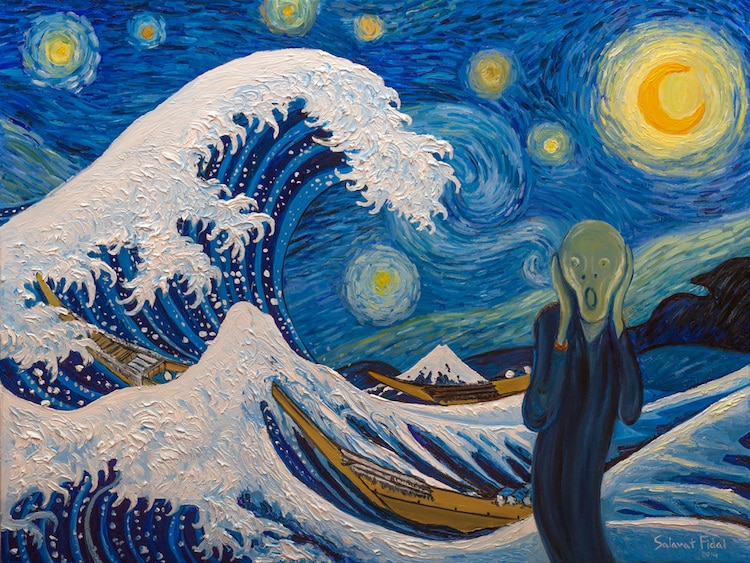
Photo: Salavat Fidai
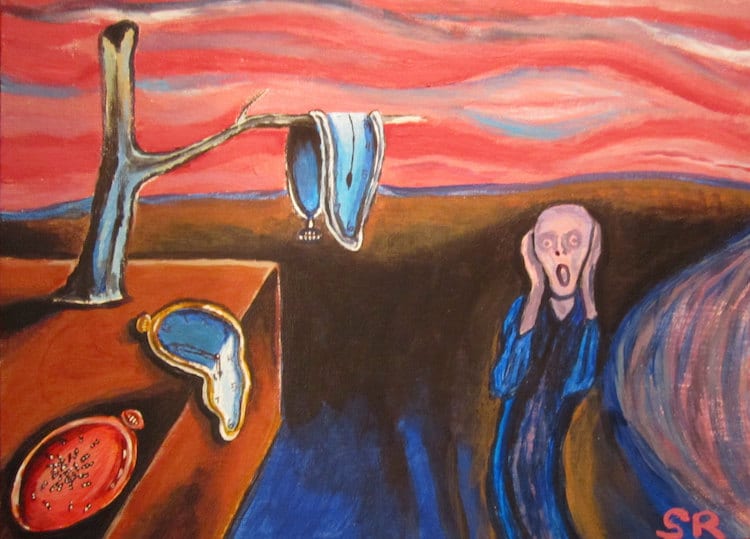
Photo: sanddansart












































































